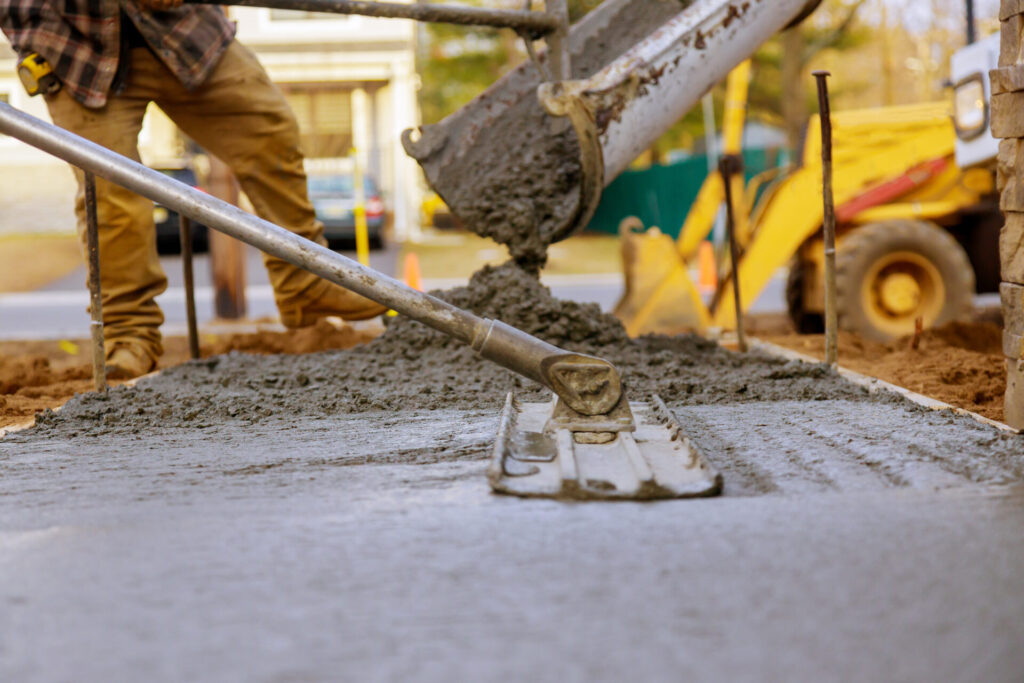Concrete, with its enduring strength and versatility, has been a cornerstone in construction for centuries. From towering skyscrapers to intricate sculptures, its applications are vast and varied. However, with the increasing focus on sustainability and environmental conservation, the construction industry faces a challenge: How can we continue to leverage the benefits of concrete while minimizing its environmental impact? Enter sustainable concrete services, a harmonious blend of quality and eco-friendliness.
The Environmental Impact of Traditional Concrete
To appreciate the significance of sustainable concrete practices, it’s essential to understand the environmental concerns linked to conventional concrete production. Primarily, the production of cement—one of concrete’s main ingredients—emits a significant amount of CO2. These emissions are a byproduct of the chemical process known as calcination, wherein limestone is heated to produce lime, a cement precursor. Consequently, the concrete industry accounts for a notable percentage of global carbon dioxide emissions.

Incorporating Sustainability into Quality Concrete Services
Sustainability in concrete services isn’t just a trend; it’s an urgent necessity. Fortunately, innovations and practices have emerged to ensure that quality concrete services are synonymous with eco-friendliness.
1. Use of Supplementary Cementing Materials (SCMs)
SCMs, such as fly ash, slag cement, and silica fume, can partially replace cement in concrete mixes. These materials not only reduce the need for cement—thus cutting down on CO2 emissions—but also often enhance the durability and workability of the concrete.
2. Carbon Capture and Storage (CCS)
Technological advancements have made it possible to capture up to 90% of the CO2 emissions produced during the use of fossil fuels in electricity generation and industrial processes, preventing CO2 from entering the atmosphere. Applying CCS in cement production can significantly reduce the carbon footprint of concrete services.
3. Recycled Aggregates
Quality concrete services now often incorporate recycled aggregates, sourced from crushed concrete remnants, in new mixes. This practice reduces the demand for raw materials, cuts down on waste sent to landfills, and often results in concrete with comparable—if not superior—strength and durability.
4. Low-carbon Concrete Mixes
Research and development efforts have given rise to concrete mixes that utilize alternative binders and novel production methods, which result in significantly lower carbon emissions than traditional mixes. Such innovations ensure that quality concrete services leave a smaller carbon footprint.
5. Water Management
Sustainable concrete services also prioritize efficient water use. By optimizing mix designs, recycling water in production, and using admixtures to reduce the water required, the industry is working towards conserving this valuable resource.
Benefits of Sustainable Concrete Practices
The shift towards sustainable concrete practices is not merely a nod to environmental trends, but a deeply rooted commitment to reshaping the construction landscape for the betterment of our planet. This change brings a multitude of benefits that span environmental, economic, and even societal dimensions. Companies like Concrete Polishing Perth are also playing a significant role in promoting sustainable practices in the concrete industry, ensuring polished surfaces that are both aesthetically pleasing and environmentally responsible. Here’s a detailed look into the myriad advantages:
- Reduction in Carbon Emissions: Traditional concrete production, especially cement manufacture, is a major contributor to global CO2 emissions. Adopting sustainable practices, such as using Supplementary Cementing Materials (SCMs) or integrating Carbon Capture and Storage (CCS) technology, can substantially curb these emissions. This not only aids in combating global warming but also aligns with worldwide efforts to meet emission reduction targets.
- Conservation of Resources: Our planet’s resources are finite. Over-extraction of raw materials like sand and gravel for concrete production can result in habitat destruction, groundwater depletion, and other ecological imbalances. Using recycled aggregates or substituting with other materials minimizes the strain on these natural resources, ensuring they are available for future generations.
- Economic Efficiency: Contrary to some misconceptions, sustainable concrete practices can often be cost-effective in the long run. The use of locally sourced recycled aggregates or SCMs might reduce transportation costs. Furthermore, as the demand for sustainable products grows, economies of scale come into play, making green concrete solutions increasingly affordable.
- Enhanced Durability and Performance: Sustainable concrete mixes, particularly those incorporating SCMs like fly ash or slag, often showcase superior resistance to corrosion, freeze-thaw cycles, and sulfate attacks. This enhanced durability translates to longer-lasting structures, reducing the need (and associated costs) for frequent repairs or replacements.
Conclusion
Sustainability in concrete services is not a choice but an imperative in today’s environmentally-conscious world. Quality concrete services now strive to balance the undeniable strengths and benefits of concrete with practices that safeguard our planet. Through innovations like SCMs, CCS, and recycled aggregates, the industry is ensuring that our built environment stands tall and green. The path to a sustainable future is paved with eco-friendly concrete practices, and the construction industry is leading the charge.






